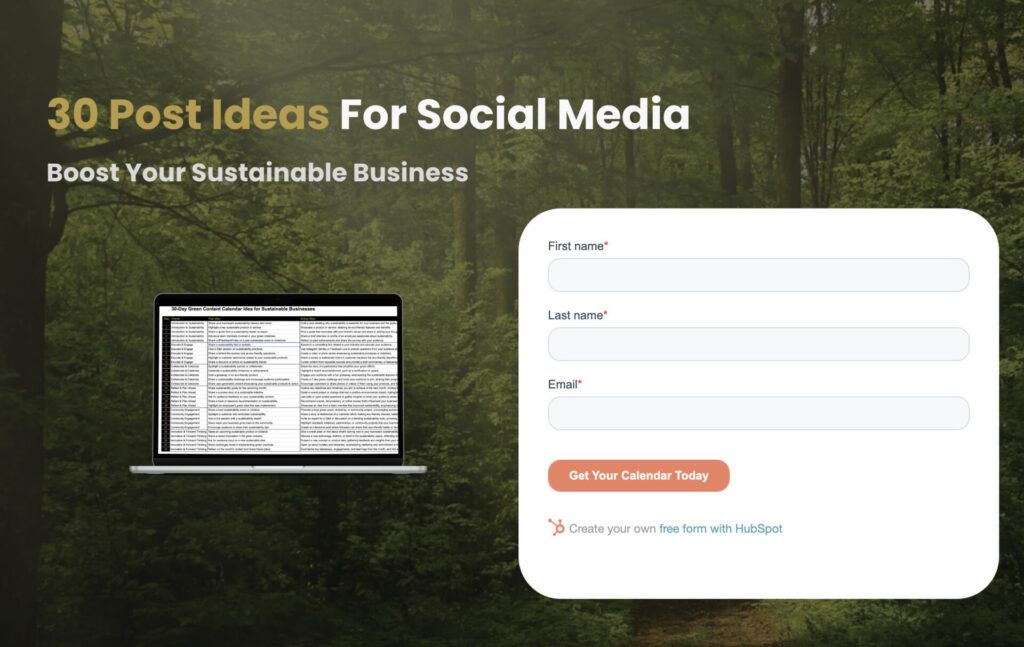
On-Page SEO: Optimizing Your Eco-Friendly Brand's Website for Better Search Rankings
On-Page SEO plays a pivotal role in boosting your eco-friendly brand’s digital visibility. If you’re passionate about sustainability and green tech, you’re in the right place. It’s high time to leverage the power of SEO to shine a spotlight on your business. Navigating the SEO landscape may seem daunting, but don’t fret. This article provides a deep dive into the best on-page SEO techniques.
SEO is more than just inserting keywords—it’s an art and a science. Through strategic website optimization, you can rank higher on search engines. Higher rankings can translate into increased traffic and conversions.
You’ve crafted a sustainable brand, one that aligns with your eco-conscious values. Now, it’s time to let the world know about it. However, there’s a challenge lurking in the shadows that you may be facing: the struggle of visibility for eco-friendly brands. Let’s delve deeper into understanding this challenge and how it impacts sustainable businesses.
Table of Contents
Blog Newsletter
The Challenge of Visibility for Eco-Friendly Brands
Visibility is a stumbling block many eco-friendly brands encounter. In the digital arena, it can be challenging to stand out. You have a great brand, but is it getting the attention it deserves? On-Page SEO may be your golden ticket to increased visibility.
The Impact of Low Search Rankings on Sustainable Businesses
Low search rankings can take a toll on your sustainable business. Search rankings play a crucial role in driving organic traffic to your website. Poor rankings can result in decreased visibility, less traffic, and ultimately, lower conversions. On-Page SEO, when implemented correctly, can mitigate these issues, making your brand more visible in the crowded online space. This highlights the importance of understanding the role of On-Page SEO in enhancing digital visibility, which we will explore next.
Our journey into On-Page SEO’s power for eco-friendly brands begins now. From comprehending its role in digital visibility to examining best practices for green tech companies, we’ll cover it all. Let’s start uncovering the potential of On-Page SEO together.
The Power of On-Page SEO for Eco-Friendly Brands
On-Page SEO wields immense power in shaping your green brand’s digital visibility. It’s like your brand’s digital identity card that speaks volumes to search engines. By finetuning each aspect of your website, On-Page SEO enhances your digital footprint.
Understanding the Role of On-Page SEO in Digital Visibility
Your eco-friendly brand’s success online largely depends on its digital visibility. On-Page SEO steps into this arena by ensuring your website is search-engine friendly. From your site’s content to its underlying code, everything contributes to your digital visibility. Each tweak you make, each keyword you strategically place, aids in painting a clearer picture of your site for search engines. This clarity is what makes you stand out in a crowded digital marketplace. With this foundation in place, let’s explore some SEO best practices tailored specifically for green tech companies.
SEO Best Practices for Green Tech Companies
Your green tech company’s commitment to sustainability can be echoed in your SEO strategy. With On-Page SEO, you are not only improving your search rankings but also promoting your eco-conscious values. It’s about crafting an SEO strategy that resonates with your mission, connects with your target audience, and pleases the search engines. But how can this be achieved? What techniques can be used? To answer these questions, we’ll dive deep into specific On-Page SEO techniques in the next section.
Dive into On-Page SEO Techniques
Delving deeper into On-Page SEO techniques, we find a myriad of ways to enhance your green brand’s digital footprint. These techniques span from the text on your pages to the code behind the scenes. The aim is always to make your website more palatable for search engines and users alike. Now, let’s explore these techniques, starting with the critical role of keyword research.
Importance of Keyword Research for Eco-Friendly Brands
Keyword research is a crucial part of On-Page SEO. As an eco-friendly brand, your keyword strategy should resonate with your audience’s language and search habits. It’s about finding the perfect balance of keywords that echo your brand’s ethos and meet your audience’s search queries. By doing this, you can connect with your audience on a deeper level, understanding and addressing their needs through your content. After nailing your keyword strategy, the next step is to ensure these keywords are well represented in your meta tags and title tags.
Optimizing Meta Tags and Title Tags for Green Businesses
Meta tags and title tags are vital elements of On-Page SEO. They tell search engines what your page is about and heavily influence your visibility in search engine results pages (SERPs). Optimized tags can make your green business stand out amidst a sea of competitors. They must be concise, relevant, and incorporate your carefully researched keywords. This practice of optimizing meta tags and title tags could potentially be a game-changer for your eco-friendly brand’s SEO strategy. As we delve further into the world of On-Page SEO, we’ll explore other techniques to fully optimize your website.
Crafting Effective Meta Descriptions for Your Sustainable Products and Services
Meta descriptions are another crucial component of On-Page SEO. These concise snippets of text appear under your URL in search results. They serve as a mini advertisement for your page, explaining what visitors will find if they click through. For your sustainable products and services, crafting compelling meta descriptions is paramount. Include relevant keywords and a clear value proposition to entice clicks. An optimized meta description could be the difference between a user choosing your website over a competitor’s.
The Role of URL Structure in On-Page SEO
Another essential element of On-Page SEO is your URL structure. URLs should be easily readable, both for search engines and users. The more descriptive and clean your URLs are, the better. They should include keywords relevant to the page’s content and exclude unnecessary characters. A well-structured URL provides both users and search engines with valuable information about the page’s content, contributing to improved search rankings.
Balancing Keyword Density in Your SEO Content
Keyword density is the percentage of times a keyword appears on a page compared to the total number of words on that page. Balancing keyword density is a fine art in On-Page SEO. It’s essential to ensure your content includes relevant keywords, but keyword stuffing can harm your SEO efforts. Google rewards content that is valuable and readable over content that is heavily stuffed with keywords. Remember, always write for your audience first, then optimize for search engines. We’ll continue exploring more On-Page SEO techniques to help your eco-friendly brand rank higher.
Importance of Header Tags in On-Page SEO
Header tags play an important role in On-Page SEO. They help to organize your content, making it easier for both users and search engines to navigate your page. From H1 to H6, each tag serves a unique purpose. Your H1 tag, usually the title, should contain your main keyword. Subsequent headers, H2 through H6, break down your content into manageable sections, each targeting different secondary keywords or phrases. A well-structured page with clear header tags not only benefits your readers but also boosts your SEO efforts.
Alt Text: Enhancing Image Optimization for Green Tech
In the world of On-Page SEO, images aren’t just decorative elements; they offer another opportunity for optimization. Alt text, short for alternative text, describes the content of an image to search engines. It’s vital for green tech businesses to optimize images with relevant alt text. This practice enhances your website’s accessibility and provides an extra spot to naturally incorporate your keywords. When search engines understand your images’ content, it adds to the overall context of your page and improves your SEO performance.
Internal Links and External Links: Strengthening Your SEO Strategy
Linking is a potent technique in the realm of On-Page SEO. Internal links connect different pages of your website, creating a cohesive network of content. This helps search engines understand the structure of your website and distribute page authority throughout. On the other hand, external links to high-quality, reputable sites can boost your site’s credibility. A balanced link strategy can significantly strengthen your SEO efforts, creating a user-friendly and search-engine-friendly website. Up next, we’ll delve into the crucial aspect of mobile optimization in On-Page SEO.
Mobile Optimization: Why It's Essential for Your Eco-Friendly Brand's Website
Mobile optimization is a non-negotiable aspect of On-Page SEO in today’s digital landscape. More users than ever are accessing the web via mobile devices. If your eco-friendly brand’s website isn’t mobile-friendly, you could be losing out on a significant portion of your audience. Mobile optimization ensures your site looks and performs great on all devices, providing a seamless user experience. This not only appeals to your mobile users but also signals to search engines that your site is user-friendly, potentially boosting your search rankings.
Schema Markup: A Key Tool for Enhancing Your SEO Performance
Schema markup is another powerful tool in your On-Page SEO arsenal. This form of microdata helps search engines understand your website content in a more detailed way. Adding schema markup to your site can lead to enhanced search results, often referred to as rich snippets. These rich snippets can increase your visibility in search results and improve click-through rates. Implementing schema markup effectively could provide a significant edge to your eco-friendly brand in the digital landscape.
Having explored various On-Page SEO techniques, let’s switch gears to real-life applications. Next up, we delve into a case study showcasing how these techniques have propelled eco-friendly brands to new heights in their SEO journey.
Case Study: Success Stories in On-Page SEO for Eco-Friendly Brands
Learning from success stories is a powerful way to understand the potential of On-Page SEO. A closer look at the digital strategies of thriving eco-friendly brands can offer valuable insights. The goal here is not just to marvel at their success but to understand how you can replicate it for your brand.
Analyzing the SEO Strategy of Leading Sustainable Businesse
Consider the case of leading sustainable businesses, which have achieved phenomenal success in the digital space. These companies understand that On-Page SEO isn’t just about visibility; it’s about connecting with their audience in a meaningful way. They effectively utilize keywords, optimize meta tags, structure URLs intelligently, and employ schema markups to enhance their digital footprint. These techniques have led to improved search rankings, increased website traffic, and higher conversion rates.
Key Takeaways from Successful Green Tech SEO Campaigns
Successful green tech companies also focus on user experience, optimizing their websites for both desktop and mobile platforms. They also utilize header tags to make their content easy to navigate and include internal and external links to create a well-connected content network. Their image optimization strategies, including the use of relevant alt text, are noteworthy too. These success stories underline the power of an effective On-Page SEO strategy and provide key takeaways for other eco-friendly brands.
Equipped with the understanding of On-Page SEO and inspired by these success stories, it’s time to think about how your eco-friendly business can leverage these techniques. Next, we’ll explore how to best leverage On-Page SEO for your green business.
How to Leverage On-Page SEO for Your Green Business
Leveraging On-Page SEO for your green business is a strategic endeavor that involves several key steps. With the right approach, your business can utilize these techniques to improve search rankings, attract more traffic, and ultimately convert more customers. Let’s explore this process, starting with conducting an SEO audit for your brand.
Conducting an SEO Audit for Your Sustainable Brand
The first step to improve your On-Page SEO is conducting an SEO audit. This involves examining your website to identify areas that need improvement. From keyword usage and meta tags to header tags and URL structure, every aspect of your website should be scrutinized. An SEO audit can help you understand where you currently stand and chart out a clear path for optimization.
How to Improve Site Speed for Better User Experience
Site speed is a significant factor in both SEO and user experience. A slow-loading website can lead to high bounce rates and dissatisfied visitors. As a green business, prioritizing site speed is paramount. This can involve optimizing images, minimizing HTTP requests, and reducing server response time, among other tactics. When your site loads quickly, it not only pleases your users but also impresses search engines.
SEO-Friendly URLs: Best Practices for Your Eco-Friendly Brand
Creating SEO-friendly URLs is another key strategy for your green business. An ideal URL is short, clean, and includes relevant keywords. It’s important to avoid unnecessary characters and make the URL descriptive of the page’s content. A well-structured URL can greatly enhance your website’s On-Page SEO, making it easier for search engines to understand and index your pages.
Anchor Text Optimization Techniques for Better SEO
Anchor text, the clickable text in a hyperlink, plays a vital role in your On-Page SEO strategy. It provides context to search engines about the linked page’s content. To optimize anchor text, it should be concise, relevant, and include keywords naturally. However, it’s crucial to avoid over-optimization, as this can be seen as manipulative and result in penalties from search engines.
HTTPS and Security: Why It Matters for Your SEO
Security is a critical component of any website, and this is particularly true for SEO. Websites that utilize HTTPS, a secure version of HTTP, receive a slight ranking boost from Google. HTTPS encrypts information sent between your website and your users, ensuring their data is protected. For eco-friendly brands that value sustainability and ethical practices, providing a secure browsing experience is a must.
The Role of Sitemaps in SEO for Eco-Friendly Brands
Sitemaps are a critical tool in your On-Page SEO toolkit. They provide a roadmap of your website to search engines, allowing them to easily find and index all your pages. A well-structured sitemap can greatly improve the visibility of your eco-friendly brand’s website. Additionally, sitemaps enhance user experience by making it easier for visitors to navigate your site.
The Importance of Page Indexing in SEO
Page indexing is the process by which search engines store and retrieve your web pages when a relevant search is made. Without proper indexing, your website will not appear in search results, no matter how well-optimized it is. Regularly checking your site’s indexing status and fixing any issues is vital to maintaining optimal SEO performance.
Join our community and stay up-to-date with the latest sustainable & marketing practices.
Conclusion: Boost Your Eco-Friendly Brand's Visibility with On-Page SEO
Recap of Key SEO Techniques for Green Businesses
Let’s quickly recap: You’ve learned the importance of conducting an SEO audit for your sustainable brand, optimizing site speed, and ensuring the creation of SEO-friendly URLs. We’ve delved into the intricacies of optimizing anchor text, enhancing site security with HTTPS, and the significant role of sitemaps. Lastly, the criticality of proper page indexing was emphasized to ensure search engines can easily store and retrieve your website’s pages.
As we’ve journeyed through the world of On-Page SEO, it’s become clear how these techniques can be leveraged to boost your eco-friendly brand’s digital visibility. From understanding the importance of keywords to the role of meta tags, headers, URLs, and sitemaps, these SEO elements play a crucial role in optimizing your website’s performance in search rankings.
Taking the Next Steps in Your SEO Journey
Moving forward, the success of your SEO journey depends on consistent application, monitoring, and adjustment of these strategies. SEO isn’t a one-time activity; it’s a long-term commitment that requires continuous effort and improvement. By harnessing the power of On-Page SEO, your green business can improve its digital visibility, connect more effectively with your target audience, and reinforce its commitment to sustainability and ethical practices.
To truly become an eco-friendly brand champion in the digital realm, the journey continues beyond just On-Page SEO. Your next mission, should you choose to accept it, involves exploring the depths of Off-Page SEO. And that’s a thrilling adventure for another day!
At The Marketing Alchemists, we are committed to promoting sustainability and eco-friendliness through our digital marketing strategies and creative services. We believe that by working with environmentally and socially responsible companies, we can help pave the way for a more sustainable future.
Let’s work together and make a difference. Talk to a Marketing Alchemist.



